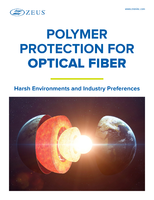New Special Columbia Marking Tools 5 Axis DOT Peen Marking Machine
USES NEW 'INTELLIGENT' MARKING TECHNOLOGY AND MAGNETIC LEVITATION MOTORS TO CONTROL THE PLACEMENT OF PART NUMBERS AND MULTIPLE 2D MATRIX UID CODES ON A WIDE VARIETY OF AIRCRAFT AND AEROSPACE PARTS
Columbia Intelligent I-Mark(TM) marking software and digital drives combined with versatile fixturing, vision marking verification and 5-axis programmable movements allow dot peen marks to be placed on flat, radial, round, angular and compound angle marking surfaces.
Columbia Marking Tools, Inc. is one of the select few marking machine companies that can design and build special 'machine-tool-like' marking equipment that is high-speed, highly- accurate, and applies the latest technology in vision verification, software and digital controls.
As a result, when one of the world's leading aircraft engine manufactures needed a new marking machine to place identification marks on wide variety of components with very different configurations, Columbia Marking Tools was called upon to design and build that machine.
Tom Phipps, Columbia Marking Tools CEO says, "The receipt of this marking machine order coincidentally came at a time when we had just completed final development stages on a number of new technologies that we were able to apply the benefits of, to this marking machine for aircraft components. For example, our new 'Intelligent' Marking software called "I-Mark(TM)" had to be able to indent permanent UID 2D data matrix codes in standard dot peen, Mil Spec dot peen, aircraft dot peen and the highly readable SQUARE-DOT(TM) scribe UID. The new digital I-M drives with imbedded computer-controlled intelligent I/Os provide the invaluable programming and diagnostic capabilities. Also, we applied our first new Mach-10 Series linear magnetic levitation motion to control the X & Y marking axes, providing very fast and accurate wear-free movement."
Andy Habedank, Columbia engineering manager explains, "We have designed-in a tremendous amount of versatility in this machine to accommodate the some of the widest part configuration variations ever done on a marking machine. At the touch-of-a-button on the touch screen, the entire machine automatically initiates a set-up mode where an additional screen shows the operator any mechanical set-ups they might need to perform.
This machine is basically a stand-alone 5-axis marking machine with a robust steel machine base and a flexible overhead vertical column, Fig. 1. The computer and controls are mounted in the machine base and the I-Mark drives in a separate panel attached to the outside of the machine base. The column, or Z-axis, contains a servo-driven ballscrew to move the marking assembly up and down, and uses state-of-the-art "all direction" tapered needle bearings for added side-to-side, up and down, and angular load and strength.
Columbia Marking Tools has applied a first-of-a-kind, Mach-10 Series head assembly. This new innovation utilizes linear magnetic levitation movements for the X & Y marking axes. The Mach-10 has no belts, leadscrews, ballscrews or any other mechanical means of movement to proper the marker. It is very fast, virtually silent, extremely accurate and eliminates a wide array of moving parts typical of other types of movement systems. Marking and vision reading is performed by a dual purpose end effector-type motor-driven rotating marking head which has a carbide peen marking stylus on one end and a Cognex vision verification camera on the other, Fig. 2. After a part is marked the head automatically rotates and inspects and verifies the mark. The camera utilizes a 4-sided blue light arrangement that provides maximum adjustment for producing the ideal contrast for reading marks, particularly the 2D matrix codes, Fig. 3. The machine design provides breakthrough technology by insuring that the camera is always positioned in the exact attitude as the marking head no matter what the angle of the part area to be marked.
Habedank adds, "The versatility in the fixturing is particularly unique because the machine design had to be able to present the desired surface for marking the part whether is was flat, radial, round, angular or even compound angles. As a result, we designed a special 3-jaw non-marring chucking type fixture. The chucking surfaces have a proprietary surface composite material on the chuck jaws to provide maximum protection for the parts. There is a worm gear arrangement in the fixture body so the fixture can be tilted infinitely within 90-degrees and the chuck jaws have a lever for manual chucking of the parts. A digital angle finder or protractor is attached to the fixture head and provides feedback interfaced with the computer."
Tim Ryder, Columbia Marking Tools, Inc. technical service manager and software engineer, points out, "It's the Intelligent I-Mark marking software and controller technology that takes all of these great mechanical designs and makes them work fast and accurately. We have spent over two and a half years developing I-Mark and it was very reassuring to see it work so effectively on this aerospace component marking machine. The controller provides Tool-2-Part offset capability for the Z-Axis that insures that the stylus of the marker is consistently and automatically set to the optimum marking distance from the part, similar to how a touch probe on CMM operates. The customer was very impressed with the fact that communications built into the software is Ethernet based, so we have the ability right here at Columbia Marking Tools to look at what is happening on the machine in real time."
Ryder says, "The software has a tremendous amount of horsepower, but it is extremely Windows® user-friendly and easy to operate. We put the I-Mark software into our own PCS 2000 touch screen control center that is mounted on an articulated bearing supported arm attached to the machine base. The PCS-2000 utilizes an Intel® Celeron 2.0 gigahertz processor with 256 megabytes of PC2700 DDR Ram and 30 gigabytes of available storage. The 15-inch LCD monitor has a 1024 x 768 pixel resolution and a touch-screen. With I-Mark it is simple to create a layout of a mark to be made with either graphics, text, proprietary fonts or 2D codes. Wide varieties of other non-printable marking utilities are also provided to set way points, inputs/outputs and even programmable dwell times. After the marking program is configured, the operator can preview the sequence of operations before actually marking, and can modify the sequence if necessary. Any and all of the marking programs can stored in files that can be easily retrieved. We've even included several dozen video tutorials to enable the operator to refresh his/her memory if they've forgotten exactly how to do something. A software manual, provided on a USB thumb drive, is often not needed because the entire HELP file is in the software and by going to our CMT web site all updates can be downloaded through the internet."
Ryder adds, "The software has been designed with the operator in mind. There is a Machine Activity Screen that provides a real time log of what the marking machine or a network of marking machines are doing. This is particularly useful because this stored log data can be used to troubleshoot. In operation, with proper networking, an operator could actually sit at a desk in an office and control, monitor and make necessary changes to programming on any number of marking machines. Also, the software has incredible diagnostic capabilities. If there are issues on the marking machine that the customer cannot resolve, the software can draw the parameters from the controller, compress it in a ZIP file, open an email and automatically send it to Columbia Marking tools for further evaluation."
"The I-Mark controller hardware is very unique and proprietary to Columbia Marking Tools and it features ethernet connections for communications," Ryder points out. "It's really a PLC & PC sequence processor with a built-in oscilloscope that provides advanced diagnostics. Each I-Mark drive controls a motion on the machine. The drives are contained in a NEMA 4 industrial enclosure attached to the machine base. It has (16) 24vdc digital I/O points. It's designed to be plug-n-play. For example, if a drive should fail, one would simply plug in a new drive and it will configure and program itself. Everything is 100% interchangeable."
Columbia Marking Tools is a leading designer and manufacturer of metal and plastic marking equipment including stamps, roll marking dies, roll marking and impact marking machines, fully programmable pulsed fiber diode laser, peen/scribe marking and UID/2D Square ◙ Dot® machines, numbering heads and special marking machines.
Send inquiries to:
Tom Phipps, CEO
Columbia Marking Tools, Inc.
27430 Luckino
Chesterfield Township, MI 48047
Telephone (800) 469-MARK
FAX (586) 949-8401
Email: tjp@columbiamt.com




